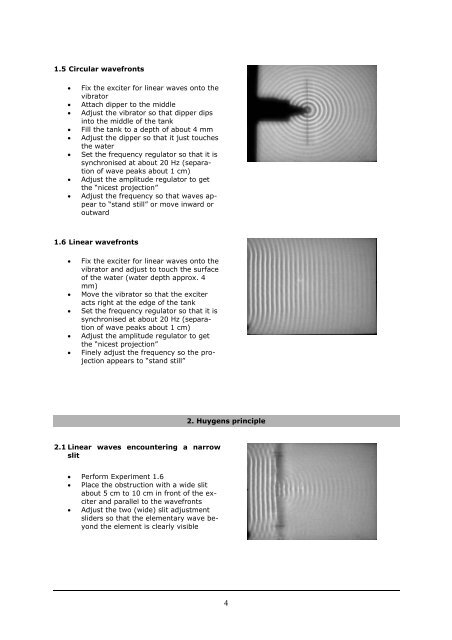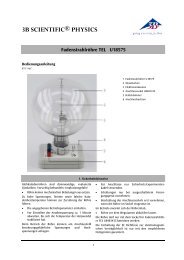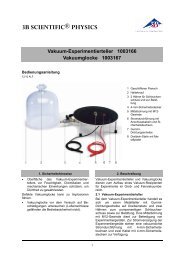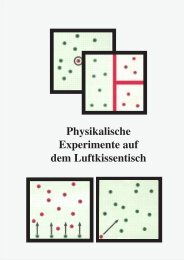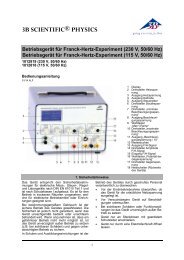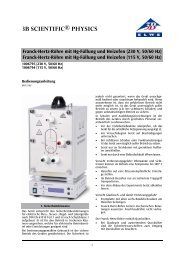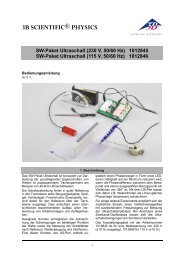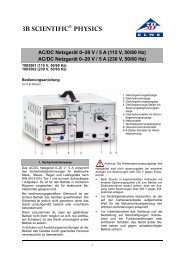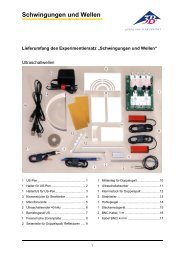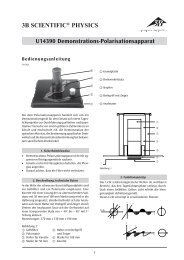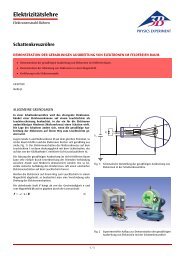3B SCIENTIFIC® PHYSICS Wellenwanne U21910
3B SCIENTIFIC® PHYSICS Wellenwanne U21910
3B SCIENTIFIC® PHYSICS Wellenwanne U21910
Create successful ePaper yourself
Turn your PDF publications into a flip-book with our unique Google optimized e-Paper software.
1.5 Circular wavefronts<br />
• Fix the exciter for linear waves onto the<br />
vibrator<br />
• Attach dipper to the middle<br />
• Adjust the vibrator so that dipper dips<br />
into the middle of the tank<br />
• Fill the tank to a depth of about 4 mm<br />
• Adjust the dipper so that it just touches<br />
the water<br />
• Set the frequency regulator so that it is<br />
synchronised at about 20 Hz (separation<br />
of wave peaks about 1 cm)<br />
• Adjust the amplitude regulator to get<br />
the “nicest projection”<br />
• Adjust the frequency so that waves appear<br />
to “stand still” or move inward or<br />
outward<br />
1.6 Linear wavefronts<br />
• Fix the exciter for linear waves onto the<br />
vibrator and adjust to touch the surface<br />
of the water (water depth approx. 4<br />
mm)<br />
• Move the vibrator so that the exciter<br />
acts right at the edge of the tank<br />
• Set the frequency regulator so that it is<br />
synchronised at about 20 Hz (separation<br />
of wave peaks about 1 cm)<br />
• Adjust the amplitude regulator to get<br />
the “nicest projection”<br />
• Finely adjust the frequency so the projection<br />
appears to “stand still”<br />
2. Huygens principle<br />
2.1 Linear waves encountering a narrow<br />
slit<br />
• Perform Experiment 1.6<br />
• Place the obstruction with a wide slit<br />
about 5 cm to 10 cm in front of the exciter<br />
and parallel to the wavefronts<br />
• Adjust the two (wide) slit adjustment<br />
sliders so that the elementary wave beyond<br />
the element is clearly visible<br />
4


